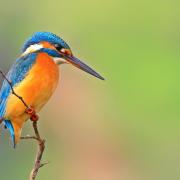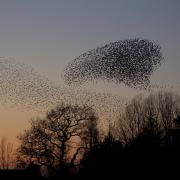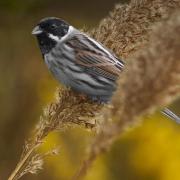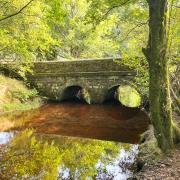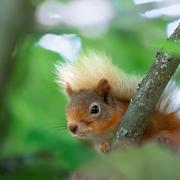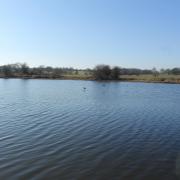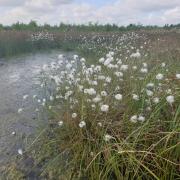Salthill Quarry is of special interest to geologists and ecologists alike but remains off the beaten track for many visitors to East Lancashire. The Wildlife Trusts’ Alan Wright ponders why

Recently, we were paying a visit to Clitheroe with some friends from "Darn Sarf", but I decided to take a detour to Salthill Quarry. It proved to be the perfect start to a lovely day.
I had promised 350 million-year-old fossils to examine as this nature reserve has been designated a Site of Special Scientific Interest because of the amazing geology here. Geologists from all over Europe visit the nine acres, surrounding an industrial estate, to study the crinoids - or sea-lilies - that lived and died there when the area was at the bottom of the ocean.
These are actually fossilised animals that roamed the deep sea and can still be found in the Caribbean. Their cylindrical bodies remind everyone of Polo mints and they have been incorporated into a Crinoid Seat, a work of art created by Fiona Bowley and Jon Fenton. This is also the site of a perfect Waulsortian Mudmound, which looks to be a giant rock.
These were first discovered in Waulsort in Belgium and are formed over millions of years by bacteria dying on the bottom of the sea and sediment collecting on top of it.

This cycle carries on and a mudmound is created.
So the geologists value this site, but we naturalists also love Salthill Quarry, and, remember, that mudmound and rock-like crinoids were once living things.
Nowadays, visitors can still find the crinoids but they are among a startlingly beautiful area of wild flowers. The fossil-formed seat overlooks wonderful bee orchids, with their false-bee-flowers inviting real insects in to pollinate them.
Disappointingly, the right type of bee doesn't live in the UK, so our bee orchids are self-pollinating but they are still a beautiful flower to behold. It is a small orchid, flowering between June and July, with pink sepals and brown lips, which look like the wings and body of those missing bees.
Cowslips are all around the paths at Salthill, but the best area for flowers is the raised meadow area and July and August offers the purple flowers of betony, delicate meadow sweet, and buttery rough hawkbit. They are followed by stunning blue cones of autumn gentian, also known as felwort.
If you ramble through the woodland, trees like ash and hawthorn dominate the canopy and dog rose, field rose and sweet briar grow along the treeline.
In the heat of summer, the azure common blue butterfly flutters from plant to plant and here, some years ago, was the first time I ever came across the six-spot burnet moth. This black day-flying moth with red spots is one of my favourite encounters in summer.
Common green and field grasshoppers also shelter among the grasses. I met a field grasshopper last summer, hiding in foliage just off the main road. I spent many minutes watching and listening to this glorious creature.
In the woods on the reserve you will hear blue tit, great tit, goldfinch and bullfinch, they have been joined by noisy summer migrants like blackcap, willow and garden warbler and chiffchaff.
The views of Pendle Hill from the reserve are spectacular and don't be surprised if you look up and a see a peregrine falcon flying past. These magnificent birds nest in, at least, five sites in East Lancashire.
This hidden nature reserve is a haven for our wildlife because of the work of my colleague The Lancashire Wildlife Trust's East Lancashire Reserves Officer Kim Wisdom and her loyal volunteers. Kim ensures that wildlife has a safe home here, while visitors are given an insight into why this nature reserve is so important.
A good way to get around Salthill Quarry is using the Geology Trail, a circular walk that takes in 10 of the best spots on the reserve. At each spot, use your iPad or smartphone to scan the QR code on the numbered post and unlock fascinating insights into the area.














